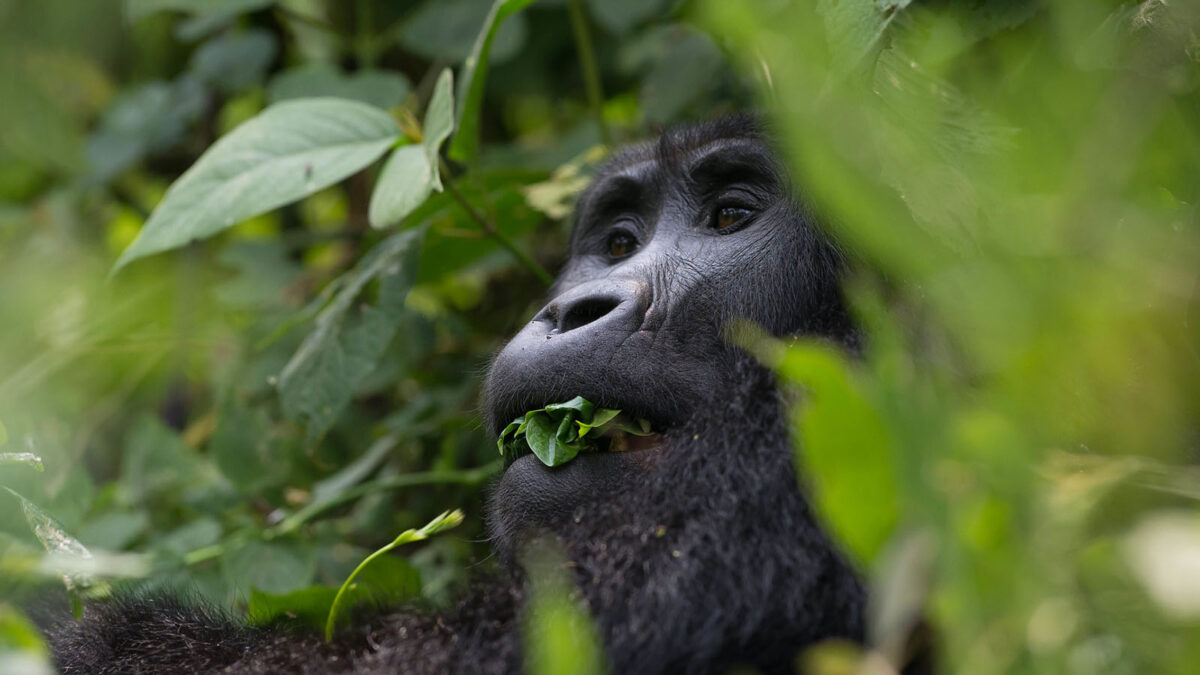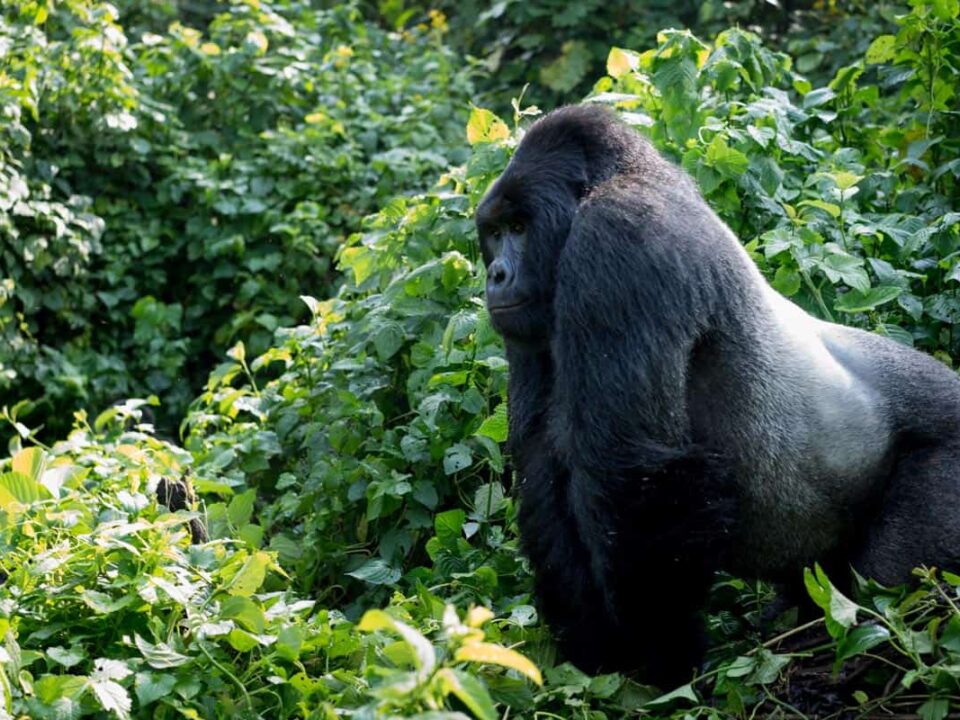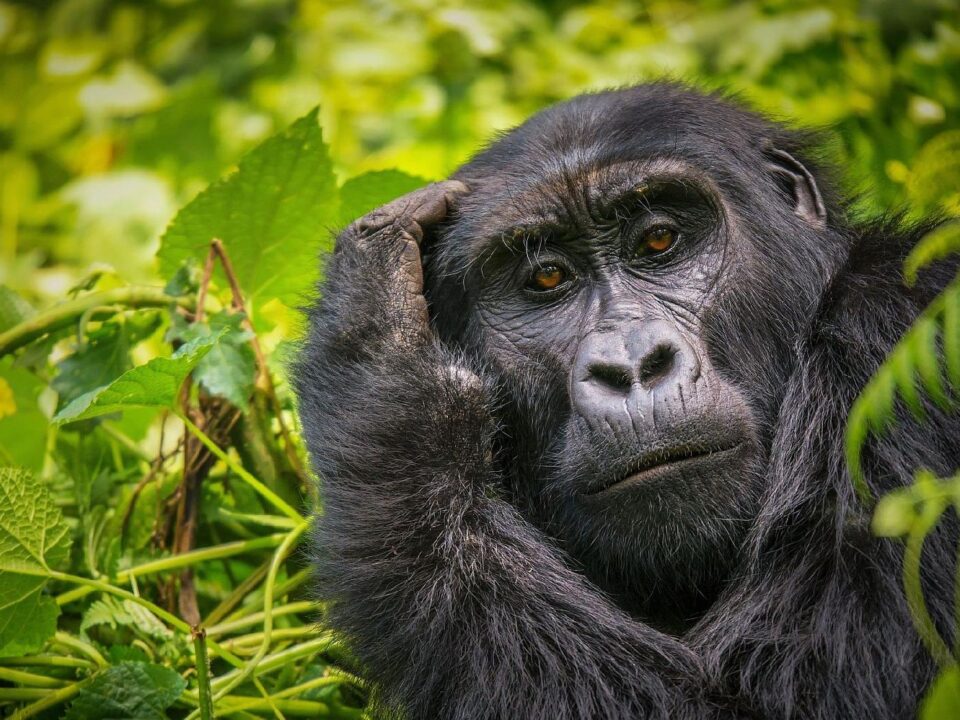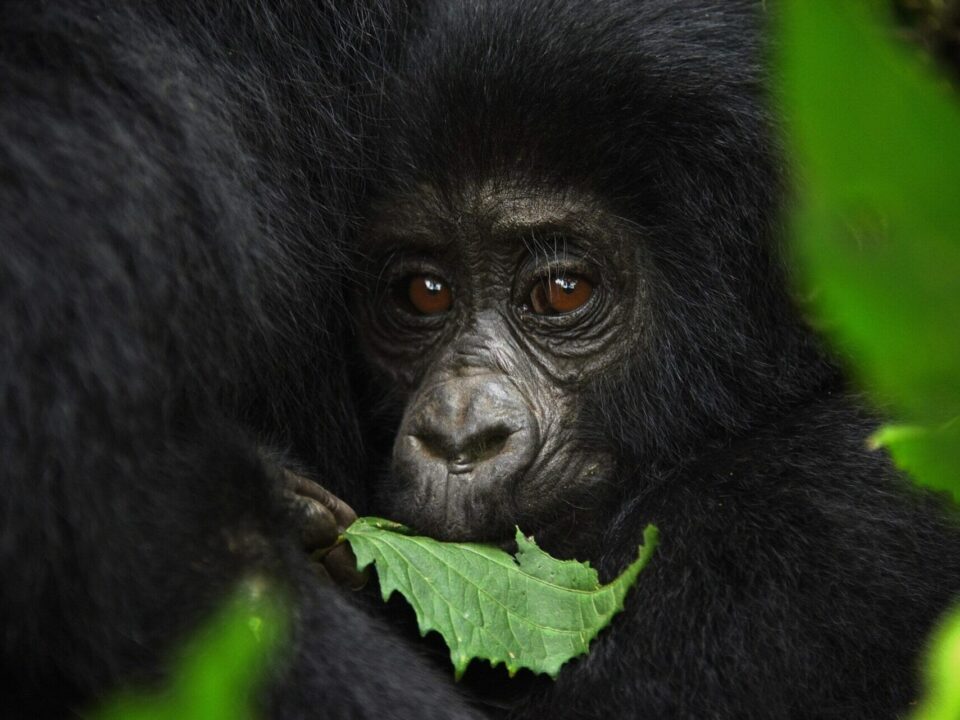Gorilla Families/ Groups in Rushaga Sector in Bwindi Impenetrable National Park

Gorilla Families/ Groups in Ruhija Sector in Bwindi Impenetrable National Park
January 3, 2023
Gorilla Families/ Groups in Nkuringo Sector of Bwindi impenetrable National Park
January 5, 2023Gorilla Families/ Groups in Rushaga Sector in Bwindi Impenetrable National Park
Located in the southern sector of Bwindi Impenetrable National Park, Rushaga is home to several endangered Mountain Gorillas. This region is one of the four sectors of Bwindi where tourists can go for Gorilla trekking. The Nshongi, Busingye, Kuhungye, Bweza, Mishaya, Bikingi, Rwigi, and Mukyunguzi are all Rushaga Gorilla groups that can be tracked in this area. With so many habituated Rushaga Gorilla groups to choose from, visitors have the opportunity to learn more about this sector and why it is a must-see destination for Gorilla trekking. Book your trip now to experience the beauty and wonder of these amazing creatures.
When visiting Rushaga, you will have the chance to see the stunning Volcano Mountains in the distance, including the Virungas, Sabinyo, Gahinga, and Muhavura. You will also have the opportunity to catch a glimpse of Lake Bunyonyi, the deepest crater lake in Africa. The scenery in this area is breathtaking, with hills, valleys, and other natural features that will take your breath away. Additionally, you will have the chance to explore Kisoro district, which is known as the “Switzerland of Uganda” for its beautiful landscape. During your travels, you will be treated to an amazing experience of the region’s topography and natural beauty.
Gorilla Families/ Groups in Rushaga Sector
- Mishaya Gorilla family
- Nshongi Gorilla family
- Bweza Gorilla family
- Kahungye Gorilla family
- Busingye Gorilla family
- Bikingi Gorilla family
- Rwigi Gorilla family
- Mucunguzi Gorilla family
Mishaya Gorilla family
The Mishaya Gorilla family is located in the Mishaya area of Bwindi Impenetrable National Park. The group consists of 10 members, including a Silverback named Mishaya who is the leader. The family originally had seven members, but has grown over time through battles with other Gorilla groups. Mishaya is known for his fighting skills and has successfully added more members to the family from other groups.
Nshongi Gorilla family
The Nshongi Gorilla family is made up of 8 members. It was originally part of the Bweza family, but the group split up due to conflicts between the adult males. The Silverback Kakono left with some of the family members to form the Bweza family, leaving the Nshongi family with just 7 members. However, the group later welcomed a baby and now has 8 members. The Nshongi family is named after the Nshongi River in Bwindi Impenetrable National Park, where it was first spotted. This family was opened up for tourists in 2009 and is a popular choice for Gorilla tracking on a daily basis.
Bweza Gorilla family
The Bweza Gorilla family is located in the Rushaga sector of Bwindi Impenetrable National Park. This family was formed in 2013 when Silverback Kakono broke away from the Nshongi family and challenged the leadership of the Bweza Silverback. The group consists of 11 members, including 2 Silverbacks, 3 blackbucks, 3 adult females, 1 sub-adult, and 2 infants. It is a relatively new family and is led by Silverback Kakono.
Kahungye Gorilla family
The Kahungye Gorilla family is a popular choice for tracking in the Rushaga sector of Bwindi Impenetrable National Park. This family was opened up for tourists in 2011 after a habituation process that lasted for two years. The family gets its name from the Kahungye hill, where the members were first spotted. The group consists of 12 members and is led by Silverback Rumanzi. In 2012, some members of the Kahungye family broke away to form the Busingye group due to conflicts within the family.
Busingye Gorilla family
The Busingye Gorilla family was once part of the Kahungye family, but Silverback Rwigi broke away to form his own group due to conflicts with Silverback Rumanzi. The Busingye family, which is led by Rumanzi and named after the hill where it makes its home, originally had 27 members. After the split, the group was left with 9 members, but later welcomed a new baby, bringing the total number of members to 10. The members of the Busingye group are known for their active and playful behavior, which has garnered attention from researchers. Some have even suggested that there may be a possibility of a reunion with the Kahungye family, although the hostility between the two groups makes this unlikely.
Bikingi Gorilla family
The Bikingi Gorilla family began the habituation process in early 2012 after members of the Mishaya family dispersed and joined the group. The Bikingi family is located in the Rushaga sector of Bwindi Impenetrable National Park and consists of 18 individuals, including 1 Silverback, 5 adult females, 2 sub-adults, 3 juveniles, and 7 infants. The leadership of the Bikingi family is currently not confirmed as the group is still undergoing the habituation process. The family is made up of both formerly habituated members and non-habituated members who are being closely monitored.
Rwigi Gorilla family
The Rwigi Gorilla family is a recently habituated group located in the Rushaga sector of Bwindi Impenetrable Forest National Park. This new family was formed when Rwigi, a Silverback who was previously one of the three dominant Silverbacks in the Kahungye Gorilla family, decided to break away and form his own group due to misunderstandings with the other Silverbacks. Rwigi fought for and took away several adult females and juveniles to create the Rwigi Gorilla family. The group consists of 10 members and is now open for tracking by tourists visiting Bwindi Impenetrable National Park. Experience a fresh and memorable Gorilla trekking adventure by visiting the Rwigi family.
Mucunguzi Gorilla family
The Mucunguzi Gorilla family is a group of Mountain Gorillas located in the Rushaga sector of Bwindi Impenetrable National Park. Mucunguzi, which means “savior,” was the third and youngest Silverback in the Bweza Gorilla family. After leaving the Bweza group, Mucunguzi formed and led the Mucunguzi family in Rushaga. The family was formed after Mucunguzi, who was the third in command of the leadership in the Bweza group, was chased out and began living a solitary life. Mucunguzi later attacked the Bikingi Gorilla family, fighting the dominant Silverback and taking away several members, mainly females, to form the new Mucunguzi family. The group is currently made up of 10 members, mostly females, and can be tracked from the Rushaga sector of Bwindi National Park. Gorilla permits to track the Mucunguzi family can be booked at the Uganda Wildlife Authority head office through Trek Africa Expeditions.
Accommodation Options in the Rushaga
The Rushaga – Nkuringo region offers a range of accommodation options to suit all budgets, from exclusive lodges to more budget-friendly options.
At the top of the list is the luxurious Clouds Mountain Lodge. Other upscale choices include the Gorilla Safari Lodge and Chameleon Hill Lodge, which both offer stunning views of Lake Mutanda. For more moderate options, there is the Gand Mutanda Lake Resort and the newer Lake Mulehe Gorilla Lodge, which overlooks Lake Mulehe and the Virunga volcano chain. Budget-friendly accommodation can be found at the Travellers Rest Hotel in Kisoro, or additional options can be arranged in the nearby town of Rubuguri
How to get to Rushaga region
Traveling to Rushaga from Kigali, Rwanda by Road
Your safari begins at 6:30 am with a pickup from your hotel or the Kigali Airport. The drive to Rushaga in the Bwindi Impenetrable Forest takes approximately 4 hours, depending on the length of time spent at the border crossing.
You will need to have obtained a visa in advance, either the $50 Uganda visa or the $100 East African visa which includes entry to Rwanda, Uganda, and Kenya. Both visas can be obtained online. In addition, you will need to present a Yellow Fever certificate for entry into Uganda.
The border crossing process usually takes 30-45 minutes, after which you will be on your way to the ancient Bwindi Impenetrable Forest. Officials on both sides will try to make the process as smooth as possible for tourists.
Please note that it takes 9-10 hours to reach the Rushaga area from Entebbe or Kampala. The route from Kigali to Bwindi is known for its beautiful, scenic views of the rolling, terraced hills of Rwanda and Uganda.
Fly to Kisoro from Entebbe International Airport for Quick Access to Rushaga
We will pick you up at your hotel in Entebbe at around 6:15 am for your 7:00 am departure with AeroLink Airline to Kisoro. The flight takes about 90 minutes, with a brief stopover at the Kihihi Airstrip.
Upon arriving in Kisoro, you will be met by your driver-guide who will take you to your lodge in the Rushaga region of Bwindi Impenetrable Forest. The drive time from Kisoro to the Lake Mulehe Gorilla Lodge is about 45 minutes.
Please note that there is a 15 kg weight restriction for your flight. Any excess baggage will incur an additional charge of $6. To save on baggage weight, we recommend wearing your gorilla trekking gear, including rain jacket and hiking boots, on the flight.




